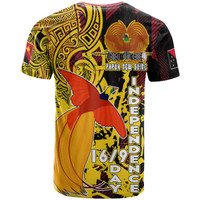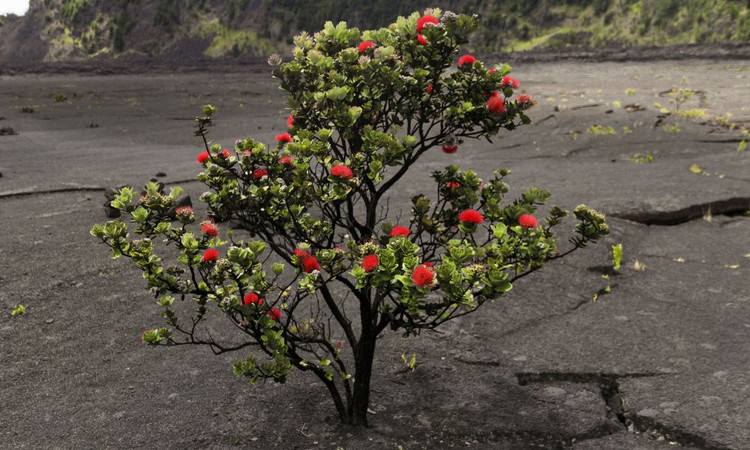5 Things You Need to Know About the ʻŌhiʻa Lehua Tree in Hawaii
Posted by Maris on 18th Jun 2024
The ʻōhiŻa lehua (Metrosideros polymorpha), one of Hawaii’s most iconic trees, is native to the Hawaiian Islands and deeply ingrained in the region’s history. Gorgeous in a range of hues from red to yellow and even white, the blooms have inspired numerous local apparel and accessories designers. Every year on April 25, we commemorate ʻŌhiʻa Lehua Day. Here are some facts about this tropical tree you should know.
It’s a floral Swiss Army knife.
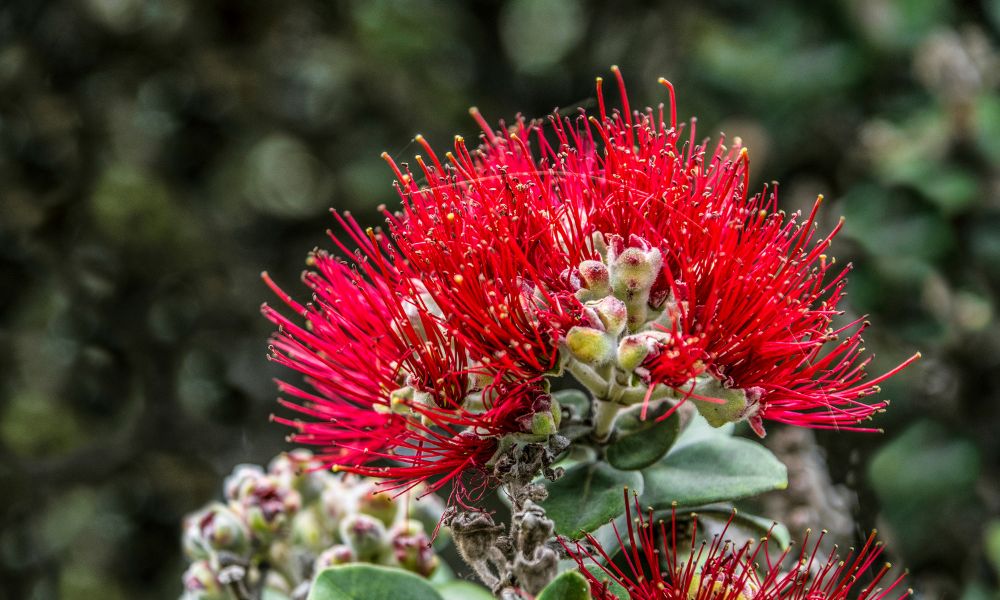
A tiny, crimson species of Hawaiian honeycreeper native to the Hawaiian Islands is called the Apapane (himatione Sanguinea). These Honeycreepers are the most common and widely distributed species, and they may be found on Molo, Kauai, Lanai, and Hawai'i islands.
In a ʻōhia lehua tree at HawaiŻi Volcanoes National Park, an apapane, a Hawaiian honeycreeper native to the Hawaiian Islands, is seen.
Gerald Corsi/Getty Images
Ancient Hawaiians utilized ʻōhiŻa trees for a variety of functions, and they were mentioned in mele (songs), oli (chants), and moʻolelo (tales). Its wood was utilized for building statues and constructions, as well as for kapa fabric beaters and poi pounding boards. Its blooms were used medicinally to treat things like labor pains. Its blossoms produced nectar that supported Hawaiʻi's diverse array of native birds, including the endangered mamo (black Hawaiian honeycreeper) and Żapapane (Hawaiian honeycreeper), whose vibrant feathers were frequently used to embellish hulas.
This flower originated from mythology.
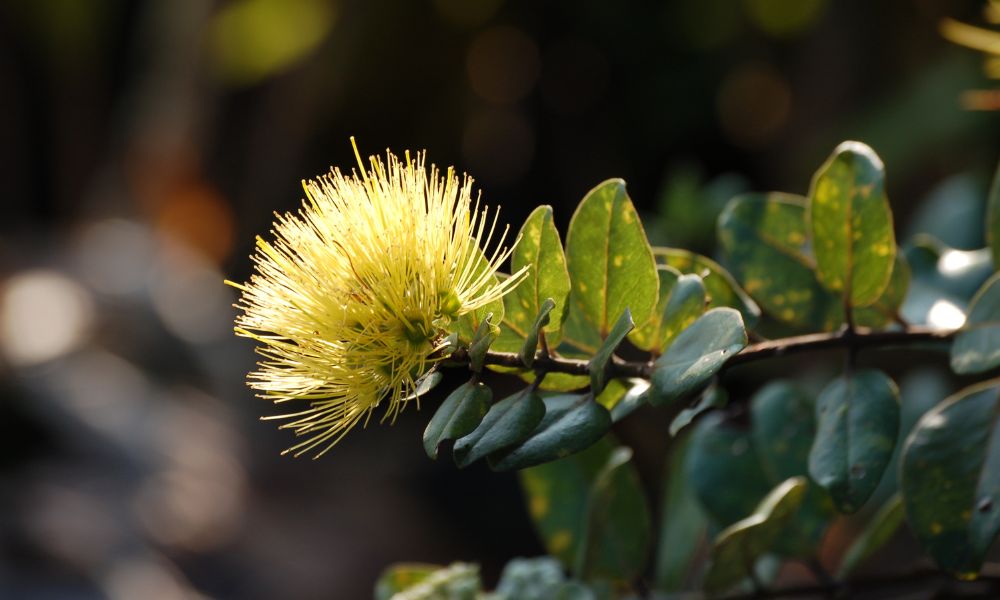
Numerous Hawaiian moŻolelo reference the ʻōhiŻa lehua flower; one of the more notable legends describes its creation. In the popular Hawaiian legend, there once was a stunning guy named of ʻŌhiŻa. Pele, the Hawaiian goddess of fire, was drawn to him because of his attractive appearance. Regretfully for Pele, ʻŌhiża was smitten with Lehua, a woman who also harbored feelings for ϻŌhiża.
Lehua tried to persuade Pele to alter ʻŌhiʻa back, but she refused as Pele turned him into an ugly, gnarled tree out of fury. Lehua then implored the other gods to step in, and as a compromise, they chose to change Lehua into a lovely flower to hang on the ʻōhiża tree, ensuring the lovers' eternal union. There are many who claim that when you pluck a blossom from a ʻōhiża tree, the two lovers weep and their tears fall from the sky.

It is available in an array of hues.
Although the most common color of ʻōhiża lehua blooms is crimson red, they can also bloom in salmon, garnet, yellow, and, very rarely, white. The five unique species of ʻōhiŻa lehua vary in a range of sizes and forms.
These flowers grow where lava flows.
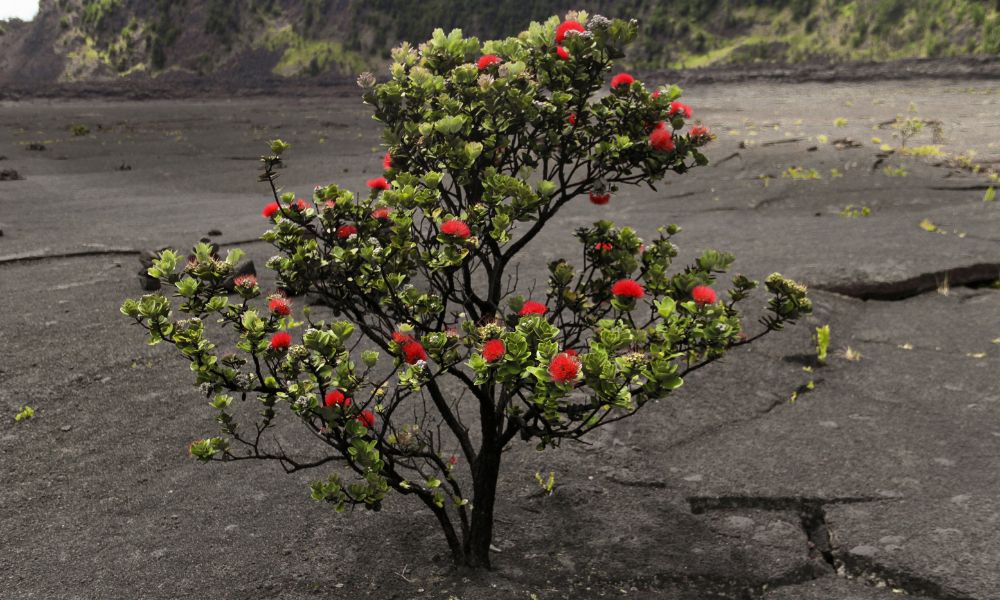
Despite the delicate appearance of the ʻōhiża lehua bloom, the plant is quite resilient and may thrive in harsh, arid settings. This is especially noticeable in places recently covered by lava flows, where the ʻōhiʻa tree usually becomes one of the first flora to take over these dry, obsidian lava rock habitats. The tree's exceptional ability to spread its roots deeply into lava rock fissures and its propensity to close its stomata, or breathing pores, which aids in blocking harmful volcanic gases that may be thrown their way, are mostly responsible for this. ŻōhiŻa, the keystone species of Hawaiian rainforested mountaintops, have the ability to grow up to 100 feet in height and nearly 1,000 years in age. In this way, they help start the forest and develop with it.
The plight of Rapid ʻŌhiʻa Death (ROD) is real.
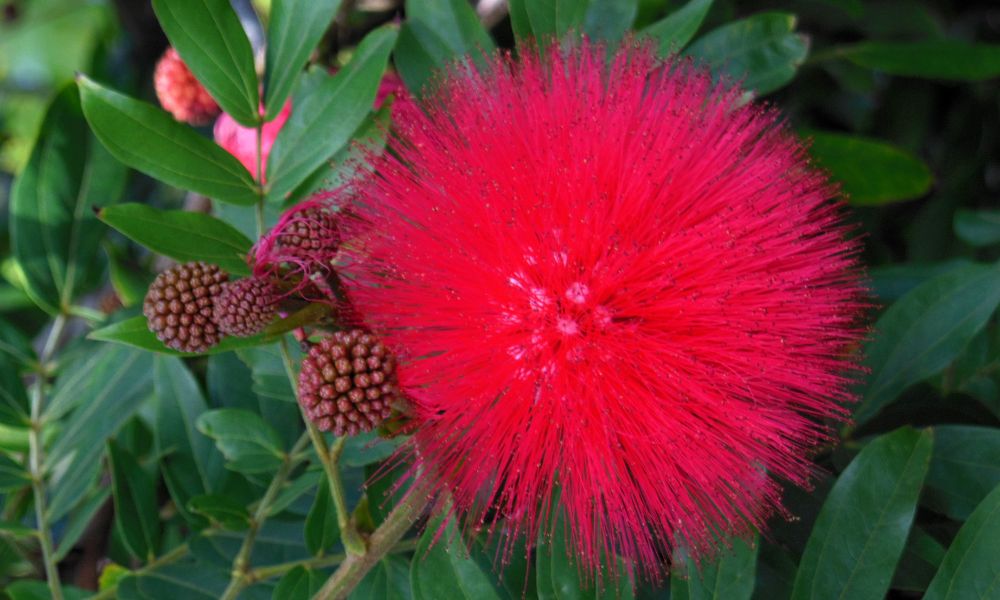
Ceratocystis huliohia and Ceratocystis lukuohia are two fungal species that have killed over a million ʻōhiʻa on Hawaii Island. Rapid Hawaii Death is the name given to the fungal disease that infects trees on Maui, Hawaiʻi Island, Kauaʻi, and Oʻahu. Since there is currently no cure, it is one of the top concerns ϻ\hiŁa. Right now, we can only abide by these five recommendations to stop ROD from spreading.
Prevent hurting ʻ\hiʼa. The microscopic fungal pathogens enter the body through open wounds on ʻōhiʻa. Moreover, machetes and other tools can be used to transfer the illness from tree to tree.
Clean your trekking equipment, boots, and tools. After cleaning all filth, use 70% rubbing alcohol to saturate tools and boot soles, then wash your garments in hot water.
After driving close to ʻōhiŻa woods, ensure all dirt is removed from automobiles as the disease can survive and spread through soil.
Never transfer ʼōhiża wood or vegetation, especially from locations with ROD, or transport it across islands.
Maintain an open gaze. Take a photo of any ʻōhiŻa that appears to have turned brown over night and send it to the island's Invasive Species Committee. Prepare a detailed account of the precise location of the tree.




